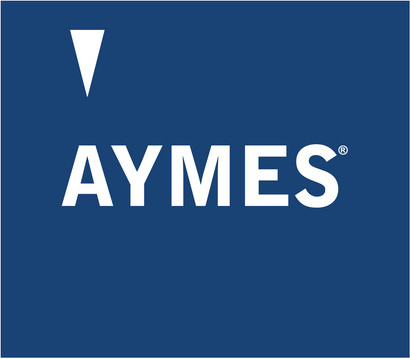An enteral feeding associate practitioner (AP) is a role that has been developed to support dietitians and enteral feeding specialist nurse’s. Although they are not registered practitioners, they have a high level of skill through experience and specific training. Associate practitioners also known as assistant practitioners can provide a career pathway for healthcare assistants or as a route to become a registered professional such as a registered dietitian or a Nurse.
Enteral feeding associate practitioners carry out many duties, such as caring for patients and completing tube insertion reviews. Tube insertion reviews include liaising with ward staff and completing care pathways correctly also checking the correct cares are being carried out, this also includes documenting when balloon volume checks are due. Once training is completed to become a trainer, associate practitioners can carry out training and teach patients, parents, carers and staff. Training and teaching can include feed pump training and how to set up a feed, teaching how to care for a feeding tube and carry out troubleshooting sessions.
AP’s have a variety set of skills and have completed lots of training ranging from phlebotomy, ECG training, cannulation, feeding tube insertion and removal training, tracheostomy training, how to apply wound dressings, first aid and CPR. Enteral feeding Associate practitioners also assist the acute home enteral feeding dieticians by making sure patients at home are tolerating their feed and are confident with tube feeding. If any incidents do occur with the feeding tube at home the assistant practitioner would provide advice and try prevent hospital admissions by liaising with the community nursing team.
With the correct training, enteral feeding associate practitioners can complete patient reviews which include documenting dietary intake, biochemical results and physical activity, also assisting the dietitian with ordering equipment and nutritional supplement samples to patients at home to try help wean patients off their feeding tube if possible. The associate practitioner can carry out their own clinics too if the dietitian is happy to support this, which can range from phlebotomy clinics on a morning when blood tests are required to phone call / consultation clinics to check patients are tolerating their feed and try gain a general update of how they are at home. Assessing the nutritional needs of individuals, creating treatment plans and monitoring patients progress with the dietitian is a huge part of being an enteral feeding associate practitioner.
Communicating effectively with other colleagues / members of staff Usually an AP will assist with the referral process for patients, if they require extra support or maybe moving to another city or country, they would need referring to the correct health care professional.
An AP will always work under the direction of a health professional such as a nurse or dietitian. The level of training and experience means they can often work alone, without supervision. AP’s will carry out agreed procedures, referring to a professional for guidance when necessary, there is opportunity’s to become a mentor which would include mentoring trainee associate practitioners, student nurses or dietetic assistants. To train as an associate practitioner, you have to be working in the NHS or have previous experience within the NHS, often in a clinical support role such as health care assistant or dietetic assistant. The skills and responsibilities vary depending on the care setting and speciality. As an Enteral feeding AP they are required to demonstrate the core caring values, keep their skills and knowledge up to date with regular enteral feeding training. They can also become members of the royal college of nursing, British dietician association.
Top tips to become an enteral feeding associate practitioner
- Have an interest in enteral feeding and being patient centred
- Try gain experience with patients who require enteral feeding
- Meet and shadow dieticians or enteral feeding specialist nurses
- Become confident and comfortable speaking to colleagues and patients + carers and relatives.
- Gain experience in endoscopy or radiology to observe an insertion of a feeding tube.
- Gain Required qualifications such as GCSE’s in maths, English, science and a relevant health and social care subject.
- Be accountable and fair with colleagues and patients/ parents/ carers.
- Be pro- active by attending courses, online webinars and filling out competency’s such as NG cares, how to care for patients who require feeding tubes. There is lots of useful information regarding feeding tube care and advice on nutricia.co.uk. For information on oral nutritional supplements visit aymes.co.uk.
- Able to follow instructions and procedures
- Able to provide evidence of at-least 6 months experience working in a health care role / patient facing job role.
What is meant by enteral feeding?
Enteral feeding is a form of nutrition that is delivered into the digestive system as a liquid, food goes directly into the stomach or the small bowel. The Gastrointestinal tract (GI tract) is composed of the mouth, oesophagus, stomach, and intestines. The dietician will choose the most appropriate formula to provide the correct nutrition. Enteral feeding is required for many reasons including when an individual has a swallowing condition, unable to eat enough food or have poor appetite due to illness. Enteral feeding can cause some side effects due to the feed being concentrated. The Feed can sometimes cause bloating and diarrhoea. Some feeds require adjustments or a complete change in the regime, lowering the rate is sometimes also required. It is common to start a feed slowly and then build up the amount gradually.
Examples of enteral feeding tubes
- Nasogastric tube known as a NG
- Nasojejunal tube known is a NJT
- Percutaneous endoscopic gastrostomy known as a PEG
- Radiologically inserted gastrostomy known as a RIG
- Jejunostomy tube known is PEJ, JEJ or RIJ tubes
Possible complications of enteral feeding.
- Re feeding syndrome which is electrolyte imbalance that may occur in people who are very malnourished and start receiving enteral feeds.
- Infection of the tube or insertion site.
- Skin irritation at the tube insertion site.
- Aspiration, which is food going into the lungs.
- Nausea and vomiting.
- Tube dislodgement or blockage.
Summary
Enteral feeding is often used as a short-term solution while someone recovers from an illness, injury, or surgery. Enteral feeding associate practitioners support this recovery and continue to support patients whilst they are at home by contacting patients to complete reviews and liaising with community nurse’s. There are some situations where enteral feeding is used as a long term solution, such as for people with neurological disorders, movement disorders or physical disabilities which require long term care. In some cases, enteral nutrition can be used to prolong life in someone who is critically ill or an older person Who cannot maintain their nutritional needs, this may require an enteral feeding associate practitioner to liaise with other specialists dietitians such as an oncology dietician and other health care professionals to create the best care plan for a patient.
Author Bio:
My name’s Georgia Best and I’m an Enteral Feeding Associate Practitioner. I have worked for Leeds Teaching Hospitals since I was 16 years old, within various departments and specialties, and am currently working for the Acute Home Enteral Feeding Team - caring for inpatients and outpatients that require enteral feeding. I am an icare ambassador for my current role.
You can connect with Georgia online
Instagram: @Enteralfeedingwithgeorgia



